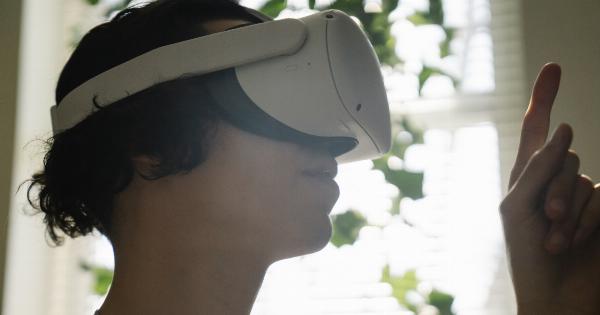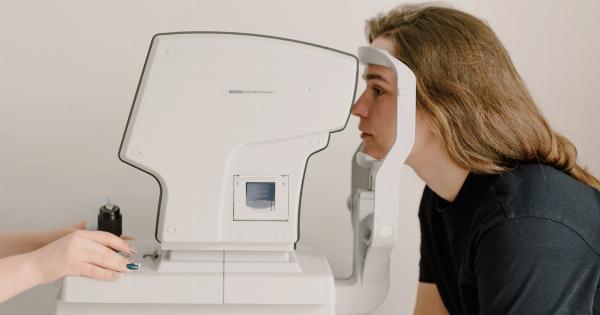Blindness is a condition that affects millions of people around the world, severely limiting their ability to see and interact with the world. For many years, finding a cure for blindness has been one of the greatest challenges for medical researchers.
However, recent advancements in technology have brought hope to the lives of visually impaired individuals in the form of bionic eye implants.
Understanding Bionic Eye Implants
Bionic eye implants, also known as retinal implants or visual prosthetics, are electronic devices designed to restore vision in individuals with certain types of visual impairment.
These implants work by bypassing damaged or non-functional parts of the eye and directly stimulating the remaining healthy cells of the retina, optic nerve, or visual cortex to create visual perceptions.
How Bionic Eye Implants Work
There are several different types of bionic eye implants, each with its own unique mechanism of action.
The most common type is the retinal implant, which consists of an external camera system, a wearable video processing unit, and an array of electrodes implanted onto the surface of the retina.
When light enters the eye, it is captured by the external camera system and converted into electrical signals.
These signals are then wirelessly transmitted to the video processing unit, which analyzes the visual information and converts it into a format that can be understood by the implant.
The processed signals are then sent back wirelessly to the retinal implant, where they are used to stimulate the remaining healthy retinal cells.
By bypassing the damaged photoreceptor cells in the retina, bionic eye implants provide a direct neural interface and stimulate the optic nerve, allowing for the perception of visual information.
Potential Benefits of Bionic Eye Implants
The development and implementation of bionic eye implants offer several potential benefits for individuals with visual impairment:.
1. Restoration of Vision: Bionic eye implants have the potential to partially restore functional vision in individuals with certain types of visual impairment, allowing them to perceive light, shapes, and even recognize faces.
2. Enhanced Quality of Life: The restoration of vision can significantly improve the quality of life for visually impaired individuals. It can increase their independence, improve their mobility, and enhance their ability to engage in daily activities.
3. Increased Social Interaction: By enabling individuals to see and interpret visual cues, bionic eye implants can enhance social interactions by facilitating better communication and non-verbal cues.
4. Improved Emotional Well-being: Regaining vision can have a positive impact on a person’s emotional well-being, reducing feelings of isolation, depression, and anxiety commonly experienced by individuals with visual impairments.
Current Challenges and Limitations
While bionic eye implants hold great promise, there are still several challenges and limitations that need to be addressed:.
1. Limited Visual Resolution: The current technology of bionic eye implants provides a limited level of visual resolution compared to natural vision. This can make it challenging to perform tasks that require fine visual discrimination.
2. Complex Surgical Procedures: Implanting a bionic eye requires a complex surgical procedure that carries certain risks and complications.
Not all individuals with visual impairments may be eligible for implantation due to various factors such as the condition of the eye or overall health.
3. Cost and Accessibility: Bionic eye implants are currently expensive and not readily accessible to all individuals who could benefit from them.
Widespread availability and affordability pose significant barriers to implementing this technology on a larger scale.
4. Long-term Efficacy: Long-term studies are still needed to determine the durability and effectiveness of bionic eye implants. The lifespan of the implanted device and the stability of visual perception over time are important factors to consider.
Current Research and Future Possibilities
Despite the challenges, researchers and medical professionals continue to explore new advancements and possibilities in the field of bionic eye implants:.
1. Improved Visual Resolution: Ongoing research aims to enhance the visual resolution provided by bionic eye implants.
This includes developing more sophisticated electrode arrays and improving algorithms for signal processing to achieve clearer and more detailed visual perceptions.
2. Wireless Power and Connectivity: Current bionic eye implants often require external power sources and wired connections, which can be restrictive.
Research is underway to develop wireless power transmission and connectivity techniques, enabling greater mobility and convenience for implant recipients.
3. Optic Nerve and Visual Cortex Stimulation: While most bionic eye implants target the retina for stimulation, there is ongoing research to explore direct stimulation of the optic nerve or even the visual cortex.
Direct stimulation of these areas could potentially offer better visual acuity and expand the scope of treatment for different types of visual impairment.
4. Integration with Artificial Intelligence: The integration of bionic eye implants with artificial intelligence has the potential to enhance visual perception and improve image recognition capabilities.
Machine learning algorithms can be utilized to optimize visual processing and adapt to individual needs, making the implanted devices smarter and more efficient.
The Future of Bionic Eye Implants
While bionic eye implants are still in the early stages of development and implementation, the potential for treating blindness and restoring vision holds great promise.
Continued advancements in technology, increased accessibility, and further research will be crucial in realizing the full potential of bionic eye implants.
With ongoing efforts, it is hopeful that the day will come when bionic eye implants become more affordable, provide higher visual resolution, and open up new possibilities for individuals living with visual impairments, offering them a renewed sense of independence and a brighter future.

























